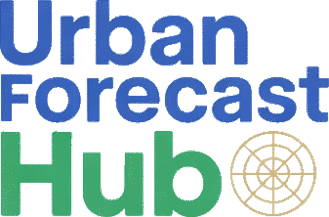Melbourne Businesses and Rainfall Insights

Have you ever considered how a simple shift in rainfall patterns can influence the success of businesses in Melbourne? Understanding these dynamics can transform operational strategies and boost resilience.
What You Will Learn
- Rainfall forecasts are essential for operational planning, allowing businesses to allocate resources effectively.
- Predicting adverse weather conditions helps mitigate risks and avoid unexpected disruptions.
- Different industries face unique challenges from rainfall patterns, influencing decisions in agriculture, construction, and utilities.
- Economic stability in Melbourne can be affected by fluctuating rainfall, impacting investment decisions and job creation.
- Integrating rainfall forecasts into business operations enhances decision-making and can lead to significant cost savings.
- Adapting strategies based on reliable weather forecasts is essential for maintaining competitiveness in an evolving climate.
- Community engagement and sustainable practices are crucial for businesses to thrive amid climate uncertainties.
Impact of Rainfall Patterns on Melbourne Businesses
Understanding and strategically adapting to rainfall patterns is crucial for businesses in Melbourne. This visual highlights key impacts and actionable strategies across different sectors. For a deeper dive into local weather phenomena, explore Melbourne's Urban Heat Island Explained.
Sectors Affected by Rainfall Patterns
-
1.
Agriculture: Irrigation needs & harvest schedules.
-
2.
Construction: Project delays & site safety.
-
3.
Utilities: Water management & supply.
Economic Considerations
-
1.
Investment Decisions: Confidence in weather patterns.
-
2.
Job Creation: Volatility in agriculture & construction.
-
3.
Consumer Spending: Direct influence on retail & hospitality.
Benefits of Integrating Forecasts
-
1.
Improved Operational Efficiency: Streamlined activities.
-
2.
Enhanced Resource Management: Optimal allocation.
-
3.
Greater Resilience: Mitigate weather disruptions.
Strategic Adaptation Steps
-
1.
Review Plans: Update based on forecasts.
-
2.
Invest in Tech: Monitoring tools & technologies.
-
3.
Train Staff: Interpret & apply forecast data.
Leveraging Rainfall Pattern Forecasts for Melbourne Business Success
As a dedicated meteorologist, I understand that rainfall pattern forecasts play a crucial role in the decision-making process for businesses across Melbourne. By accurately predicting rainfall, businesses can enhance their operational efficiency, minimize risks, and better respond to environmental changes. The ability to anticipate whether the next week will bring sunshine or showers can significantly impact planning and overall strategy.
In Melbourne, where weather can be highly unpredictable, having access to reliable rainfall forecasts is not just beneficial; it’s essential. This data helps businesses make informed choices about staffing, resource allocation, and project timelines. For instance, knowing a storm is on the horizon allows a construction company to adjust its schedule accordingly, protecting both workers and materials. For more on how to stay ahead, consider staying informed with local weather updates.
Understanding Rainfall Forecasts and Their Importance
Rainfall forecasts are more than just daily weather updates; they provide actionable insights that can shape business strategies. Here are a few reasons why monitoring these forecasts is vital:
- Operational Planning: Timely forecasts enable businesses to allocate resources effectively, ensuring smooth operations.
- Risk Management: Predicting adverse weather conditions can help mitigate risks associated with unexpected disruptions.
- Cost Efficiency: Businesses can avoid unnecessary expenses by planning around forecasted weather events.
Understanding these factors can empower Melbourne's business community to harness weather data in their planning processes. As we adapt to a rapidly changing climate, staying informed is key to thriving in our vibrant city.
How Rainfall Patterns Affect Melbourne Businesses
The implications of rainfall on various sectors cannot be underestimated. Different industries experience unique challenges and opportunities based on rainfall patterns. Here’s how some sectors are affected:
- Agriculture: Farmers rely on accurate forecasts to determine irrigation needs and harvest schedules.
- Construction: Rainfall can delay projects and increase costs due to site safety concerns.
- Utilities: Water management systems must adapt based on predicted rainfall to ensure supply meets demand.
By recognizing these impacts, businesses can develop tailored strategies that leverage rainfall data, ultimately fostering resilience and adaptability in operations.
The Economic Impact of Rainfall Variability on Local Economies
Fluctuating rainfall patterns have profound implications for the economic stability and growth of Melbourne. For instance, prolonged drought conditions can strain water resources and increase costs for local businesses. Conversely, excessive rainfall can lead to flooding, affecting logistics and supply chains.
This variability impacts not just individual businesses but also the wider economy. Here are a few economic considerations:
- Investment Decisions: Businesses may be hesitant to invest in expansion without confidence in weather patterns.
- Job Creation: Industries like agriculture and construction can face job volatility due to unpredictable weather.
- Consumer Spending: Weather can directly influence consumer behavior, affecting retail and hospitality sectors.
Understanding the economic ramifications of rainfall variability helps businesses not only survive but also thrive in Melbourne’s dynamic climate landscape. For more detailed insights into local weather, check out Understanding Melbourne's Weekly Weather Trends.
Innovative Technologies Behind Rainfall Forecasting
In the next section, we will explore the advanced technologies that enhance rainfall forecasting accuracy, ensuring that Melbourne’s businesses can stay ahead of the weather curve!
Pro Tip
To maximize the benefits of rainfall forecasts, consider investing in a subscription to a reliable weather service that provides hyper-localized data. This can equip your business with timely updates, allowing for swift adjustments in operations and resource management. Remember, being proactive rather than reactive can save both time and costs in the long run!
Frequently Asked Questions (FAQs)
Summarizing the Impact of Rainfall Forecasts on Business Operations
Integrating rainfall pattern forecasts into business operations can significantly enhance decision-making and efficiency across various sectors. By utilizing accurate data, businesses in Melbourne are better equipped to plan their activities and mitigate disruptions caused by unpredictable weather. This not only streamlines operations but also fosters a proactive approach that can lead to substantial savings and improved service delivery.
For instance, businesses that leverage rainfall forecasts can optimize their supply chains, reduce waste, and enhance customer satisfaction. As a result, these organizations don't just survive in Melbourne's dynamic climate; they thrive! Here are some key benefits of integrating these forecasts:
- Improved operational efficiency
- Enhanced resource management
- Greater resilience to weather-related disruptions
- Informed decision-making processes
Encouraging Strategic Adaptation to Changing Weather Patterns
As Melbourne's weather continues to evolve, it’s crucial for businesses to adapt their strategies accordingly. Reliable weather forecasts allow organizations to anticipate changes and pivot their operations, which is essential for maintaining competitiveness. Have you ever noticed how some businesses seem to handle unexpected rain better than others? The secret often lies in their preparedness and strategic planning based on accurate forecasts.
To successfully adapt, businesses should consider the following strategies:
- Regularly review and update operational plans according to weather forecasts
- Invest in weather monitoring technologies and tools
- Train staff on the importance of weather data in daily operations
- Engage in community discussions about weather impacts and best practices
Community Engagement and Environmental Sustainability Initiatives
Businesses play a vital role in promoting sustainability, especially when informed by reliable rainfall forecasts. By making data-driven decisions, organizations can significantly reduce their environmental footprint while contributing to community resilience. At Urban Forecast Hub, we believe that empowering businesses with accurate weather information fosters not just operational success but also a commitment to sustainability.
Here are some ways businesses can engage with their communities and promote environmental sustainability:
- Support local environmental initiatives based on climate data
- Encourage sustainable practices in supply chains by aligning with weather forecasts
- Participate in workshops and discussions on climate adaptation
- Share insights and resources with other local businesses to build a collaborative approach
Next Steps for Melbourne Businesses Seeking to Optimize Operations
How to Get Started with Rainfall Forecast Technologies
Ready to harness the power of rainfall forecasts in your business? Here are some actionable steps to get started:
- Research available rainfall forecasting technologies and services
- Identify your specific operational needs regarding weather data
- Integrate forecasting tools into your existing business systems
- Train your team on how to interpret and apply forecast data effectively
By taking these steps, you'll be well on your way to optimizing your operations and gaining a competitive edge in Melbourne's evolving climate. For more specific seasonal outlooks, you might find Melbourne Summer Weather Expectations 2023 insightful.
Call to Action: Embrace Forecasting for Operational Excellence
As we look ahead, I invite you to explore advanced rainfall forecasting solutions that can revolutionize your business operations. Don’t hesitate to reach out to relevant service providers who can guide you through the implementation process. Together, we can build a community of well-informed businesses that thrive in Melbourne's dynamic weather landscape!
Recap of Key Points
Here is a quick recap of the important points discussed in the article:
- Operational Planning: Timely rainfall forecasts enable effective resource allocation for smooth business operations.
- Risk Management: Predicting adverse weather conditions helps mitigate risks associated with unexpected disruptions.
- Sector-Specific Impacts: Different industries, like agriculture and construction, require tailored strategies based on rainfall patterns.
- Economic Considerations: Rainfall variability affects investment decisions, job creation, and consumer spending in local economies.
- Integration of Technologies: Businesses should invest in forecasting tools and train staff to enhance decision-making based on accurate weather data.
- Community Engagement: Supporting local environmental initiatives fosters sustainability and resilience in the community.







